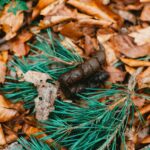Are you ready to dive into the fascinating world of DIY slime experiments? If you’ve ever wondered how to create your own gooey, stretchy, and mesmerizing slime right in the comfort of your home, then you’ve come to the right place! In this article, we’ll take you on an exciting journey as we explore the wonders of hands-on learning through simple DIY slime experiments. Get ready to unleash your inner chemist and have some ooey-gooey fun!

DIY Slime Experiments at Home
Slime, the gooey and stretchy substance loved by kids and teens alike, is not just a fun craft activity—it’s also a great way to learn about chemical reactions and the properties of materials. With a few simple ingredients and some creativity, you can whip up your own slime right at home. In this article, I will guide you through some simple DIY slime experiments that are sure to entertain and educate. So, roll up your sleeves, grab your safety goggles, and let’s dive into the world of slime!
One of the most basic and popular slime recipes is clear slime. To make this, you’ll need some PVA glue, liquid starch, and a bit of water. Start by pouring about ¼ cup of glue into a bowl, then slowly add 1 tablespoon of starch while stirring continuously. Keep adding starch until the mixture starts to come together and becomes less sticky. Knead the slime with your hands until it reaches the desired consistency. Add a few drops of food coloring if you want to give your slime some pizzazz. And voila! You’ve created your very own clear slime!
But what if you want to create something with a little more fluff? Well, fluffy slime might be just what you’re looking for. This type of slime is soft, airy, and incredibly fun to play with. For fluffy slime, gather shaving cream, PVA glue, some borax solution, and a bit of water. In a bowl, mix ½ cup of glue with a few pumps of shaving cream. Stir until it’s well combined. In a separate container, dissolve 1 teaspoon of borax in ½ cup of warm water. Slowly add the borax solution to the glue mixture, stirring as you go. Keep adding the solution until the slime starts to come together. Knead it with your hands and watch the fluffiness unfold! Feel free to add glitter or beads for some extra flair.
If you’re in the mood for some sparkle, glitter glue slime might be the perfect choice. Making glitter glue slime is as easy as mixing equal parts glue and liquid starch. Simply squeeze out the desired amount of glitter glue into a bowl, then gradually add liquid starch while stirring continuously. Keep adding starch until the slime forms and the stickiness disappears. Remember to knead it well to achieve the desired consistency. You’ll be left with a mesmerizing slime that sparkles and shines!
But what if you’re looking for something a little more out of the ordinary? That’s where oobleck slime comes in. Oobleck is a mysterious substance that acts like both a liquid and a solid, depending on how you handle it. To make oobleck slime, combine cornstarch and water in a ratio of 2:1. Mix them together until you have a gooey, slimy consistency. Play around with the oobleck by squeezing it or letting it drip through your fingers. You’ll be amazed at its magical properties!
Now that you have some basic slime recipes under your belt, it’s time to get creative. Explore the endless possibilities by adding different colors, textures, or even scents to your slime. You can try making slime with household items like laundry detergent, marshmallows, or even sodium polyacrylate crystals from diapers. The internet is filled with exciting slime experiments waiting to be discovered.
Remember, safety always comes first when conducting any experiment. Always work in a well-ventilated area, use appropriate safety gear like gloves and goggles, and keep slime away from your mouth and eyes. If you’re experimenting with borax, make sure to handle it with care as it can cause irritation. And don’t forget to wash your hands thoroughly after playing with slime.
To sum it up, DIY slime experiments at home are a fantastic way to combine fun and learning. Whether you’re making clear slime, fluffy slime, glitter glue slime, or oobleck slime, the possibilities are endless. So gather your supplies, tap into your creativity, and let the slimy adventures begin!
“Get ready to dive into the world of slimy science and create your own ooey-gooey concoctions!”
Check out these Fun Facts About Toy Slime! You won’t believe the fascinating properties and endless possibilities of this gooey substance. From its mesmerizing colors to its squishy texture, toy slime is a sensory delight that both kids and adults can’t resist playing with. Did you know that some toy slimes even glow in the dark? It’s truly a marvel of science and creativity. Discover more surprising facts about toy slime by clicking here: Fun Facts About Toy Slime. Don’t miss out on this captivating exploration into the world of slime!

FAQ
Q: What are some popular websites that provide slime recipes and science ideas?
A: Some popular websites for slime recipes and science ideas include Natural Beach Living, Home Science Tools, Science Buddies, The Spruce Crafts, DIY Projects for Teens, Gally Kids, YouTube, and TikTok.
Q: What types of slime can I learn to make from these websites?
A: These websites provide step-by-step instructions for making various types of slime, including clear slime, fluffy slime, glitter glue slime, oobleck slime, basic slime, laundry detergent slime, marshmallow slime, and rainbow slime.
Q: Can I find videos demonstrating DIY slime experiments?
A: Yes, you can find short videos on YouTube and TikTok that demonstrate DIY slime experiments at home. These videos showcase different methods, such as making slime without glue and activator, and water slime recipes.
Q: Are these slime recipes safe for kids and teens to make at home?
A: Yes, the slime recipes provided by these websites are generally safe for kids and teens to make at home. However, it is important to follow safety precautions and use non-toxic ingredients as recommended.
Q: Can slime experiments be used as a learning tool?
A: Absolutely! Homemade slime is not only a popular craft activity, but it can also be used as a science experiment to learn about chemical reactions and properties of materials. It provides a hands-on way for kids and teens to explore and understand scientific concepts.
- Jerry McSorley’s Post-Divorce Life: New Beginnings - July 16, 2025
- The Rise and Fall of the New Haven Nighthawks: A Minor League Hockey Legacy - July 16, 2025
- Unlock Jerry McSorley’s Career Highlights: Eye Tax Inc.’s Solar Success - July 16, 2025
















